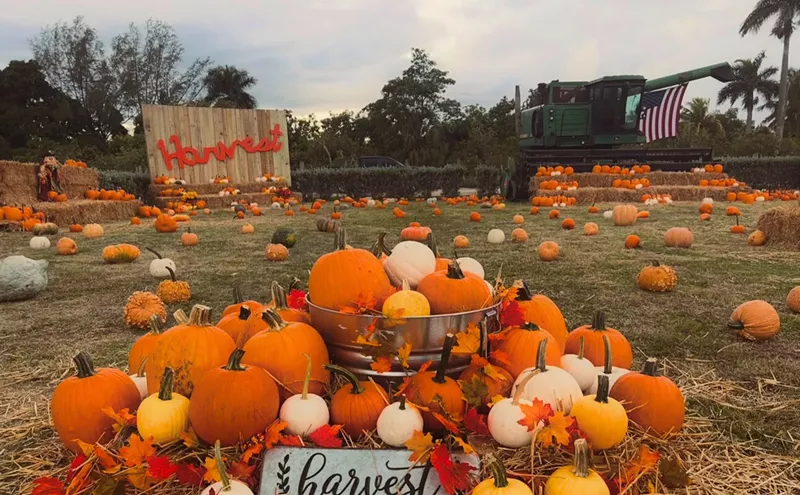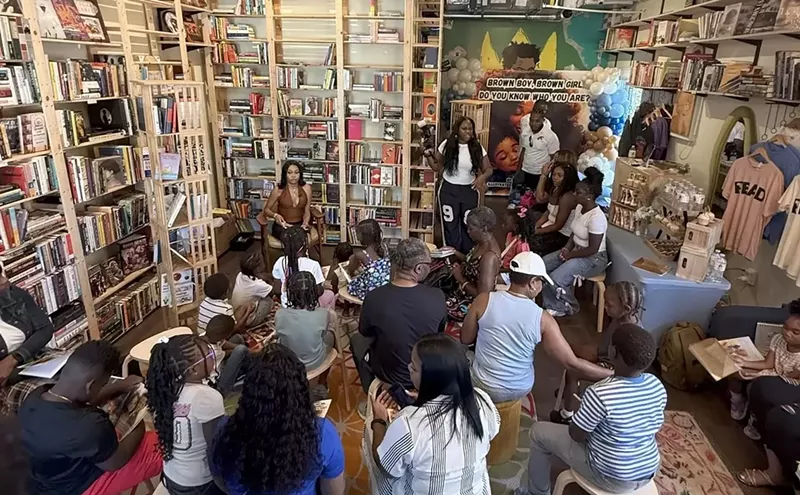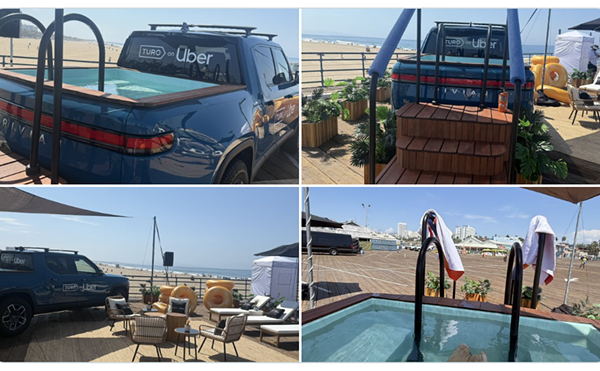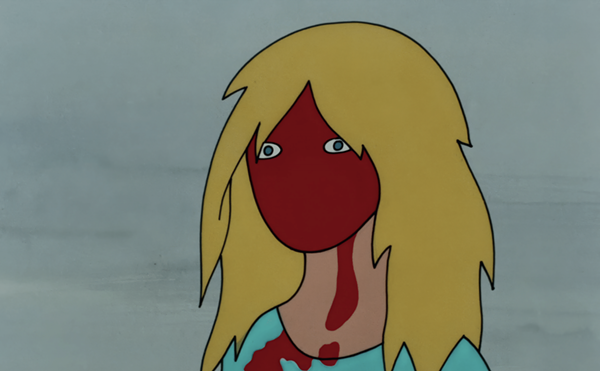A particularly chilling scene appears in the first season of Jessica Jones, the Netflix series based on a Marvel Comics character — a scene feminist critics have called a metaphor for the comic industry at large. Jessica Jones, portrayed by firebrand Krysten Ritter, is seated at a dinner table with her aggressor and mind-controlling tormenter, Kilgrave, played by actor David Tennant. Jones, in a royal-blue frock that departs from her typical jeans and leather jacket, stares blankly ahead as the food arrives.
"You're going to love it," Kilgrave says.
"I will love it," Jones replies, her innocuous agreeability a testament to Kilgrave's mind-control powers.
"Then smile," he demands. Jones musters a strange, vacuous grin.
Men wielding power over women is nothing new in American television, or in American entertainment, or in American history. But American comic books, in particular, have a long-standing tradition of depicting women as either helpless dime-store vixens or beautifully vicious impediments to crime-fighting. Jessica Jones gets credit for turning that premise on its head: Its hero spends the series clad in no-nonsense jeans and a leather jacket, for starters. But it's certainly the exception to the rule, as misogynistic undertones continue to permeate the comic-book vernacular: Lois Lane and her unrelenting need to be saved from danger; the sultry working girls of Sin City; and the sexist tropes that persistently encircle Batgirl are just a few examples of the industry's unending quest to appeal to male readers by disempowering and objectifying women.
Comic books are thought to be descendants of pulp fiction. Both are printed on the same cheap paper and contain the same content: action, adventure, crime-fighting, and sex. The only difference: While pulp novels contained mostly text, comics evolved to include illustrations.
Sometimes the women were bound or gagged, signaling their helplessness.
tweet this
Curators at the Wolfsonian-FIU in Miami Beach set out to explore this timeline of misogyny in "In the Shadows: American Pulp Cover Art," a new exhibition containing 28 pulp periodicals and paperback literature dating from the 1930s to the 1950s. On view this Thursday through July 9, the exhibition was organized in collaboration with students from Florida International University, who focused on themes of sex and violence in pulp fiction and its role as predecessor to the modern comic-book industry.
Pulp magazines emerged in the early 1900s as an inexpensive solution for male readers seeking a thrill, earning the name "pulps" because of the cheap pulp wood paper on which they were printed. Pulp publishers built a lucrative business selling sex and sleazy fiction to young male audiences. They found their niche in subversion: A precursor to Playboy and Penthouse, pulps offered the type of salacious material that Hollywood's overly limiting censorship laws prohibited on TV and film. As a result, pulps were wildly popular among readers while being a cost-effective business for authors, illustrators, and publishers. Some pulp illustrators rose to fame for their graphic covers, while notable authors, such as F. Scott Fitzgerald, Ray Bradbury, and Phillip K. Dick, wrote for pulps at varying points in their careers.
Because pulps were cheaply produced, illustrations among their pages were scarce. Instead, pulps concentrated on creating exciting, melodramatic covers that incorporated color and movement to entice readers. Notably, most pulp illustrators were men.
The earliest pulps in the exhibition date from the '30s and were heavily centered on male aggression and violence. These covers often mirrored a familiar political agenda — demonizing foreign war enemies while celebrating American heroes with a stereotypically masculine appearance.
On the cover of a January 1944 edition of Speed Adventure Stories is "The Golden Galleon," written by Tom W. Blackburn and illustrated by Hugh J. Ward. A voluptuous blonde is pictured with her hands tied behind her back, a look of horror etched on her face as she watches two men playing cards in the corner of the frame. The male card players appear to be battling over who gets to "save" the damsel in distress. One wears a fez and a menacing sneer; the other has a sharp, square jaw and wields a knife to use against his exotic foe.
Details such as men's rugged features and women's bursting bust lines bolstered gender stereotypes and were widely prevalent tactics among pulp illustrators. Women were often depicted as blondes wearing revealing clothing or bustier tops. Sometimes these characters were bound or gagged, signaling their helplessness. By contrast, men were often depicted as having square jaws, wide-set eyes, and chiseled cheekbones — stereotypes of the quintessential strapping hero.
Though women were portrayed as defenseless and naive at the outset of pulp fiction's heyday, the '40s saw more women entering the workforce and picking up the slack for husbands off at war. Reflecting this shift in American culture, pulps began to illustrate women as dubious spies and villains who flaunted their sexuality. In these pulps, female characters remained busty and beautiful, but their sinister motives were revealed with telling illustration clues. Long blood-red nails, red dresses, and red lipstick were the marks of a pulp seductress. In a 1941 issue of the pulp periodical True Detective, an illustration by David Berger shows a blonde wearing a crimson dress with a plunging neckline as she leans against a chair. In the magazine Current Detective, "Death of a Lonely Lady," illustrated by J. James in 1944, depicts a topless brunette posing with a naked gun. And a 1950 Underworld Detective illustration by Bob Graves features a curvy, seductively posed redhead clad in nothing but an arm's-length black satin glove.
The message of early 20th-century pulp — that women who wield power must be hypersexual, cold-hearted beings — is a sexist trope that persists throughout the history of American comic books and graphic novels. Even as women became characters in their own series, illustrators and authors repeatedly stereotyped these heroines: For example, William Multon Marsten drew Wonder Woman as a bodacious superhero with a guitar-shaped body and long, flowing hair. Marsten constantly reminded readers of Wonder Woman's gender with references to her "feminine vanity" while alluding to her limited strength compared to that of a man.
Despite growing female interest among fans of comic books and graphic novels, the chauvinistic origins of pulp fiction remain on display today. Jessica Jones is part of a growing trend in comics to grapple with these sexist traditions rather than maintain them, by adding dimension and complexity to the women it portrays. But we haven't moved so far from the days of pinup-style pulps. Modern female characters can finally be powerful, yes, but they also must be beautiful. Whether they like it or not, they still have to smile.
"In the Shadows: American Pulp Cover Art"
Thursday, April 13, through July 9 at the Wolfsonian-FIU, 1001 Washington Ave., Miami Beach; 305-531-1001; wolfsonian.org. Tickets cost $10 for general admission and $5 for students, seniors, and children aged 6 to 12; FIU students, faculty, staff, and children under 6 get in free.













